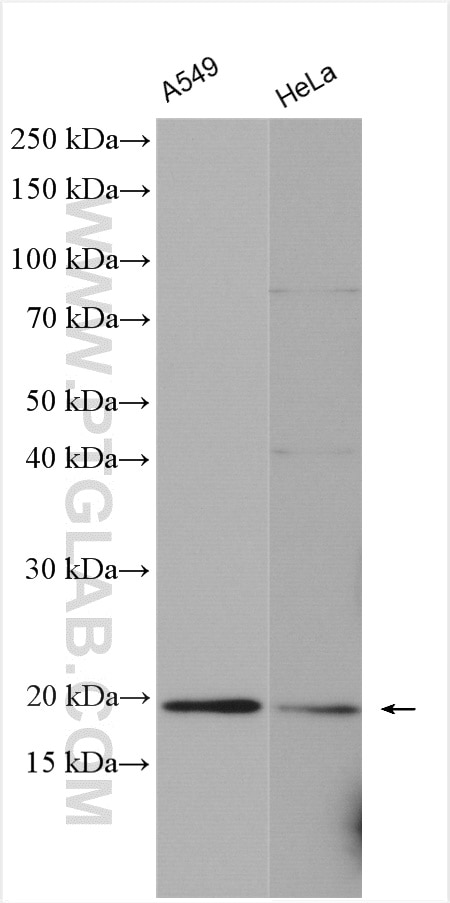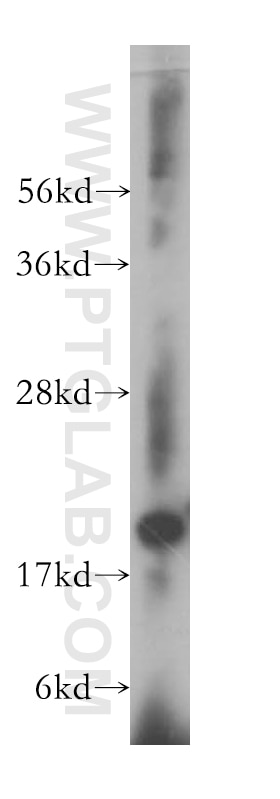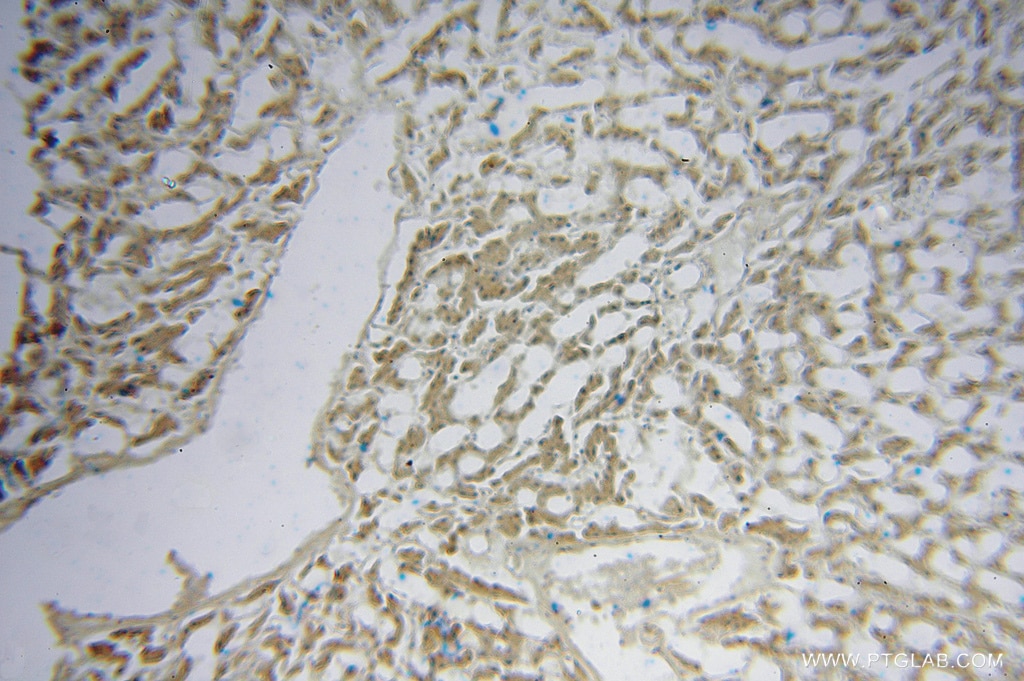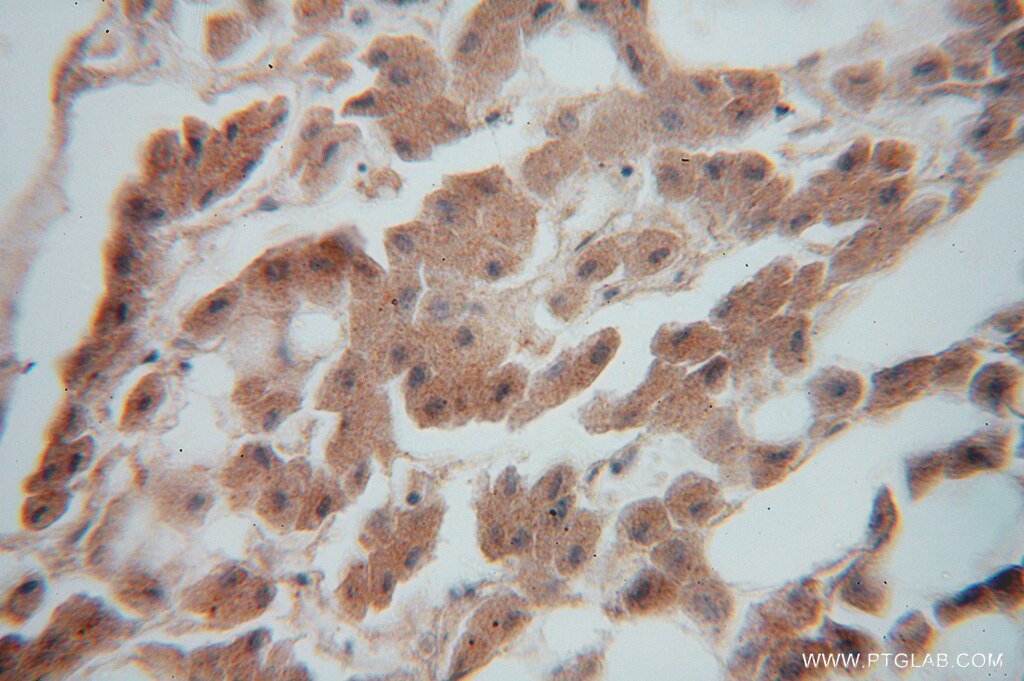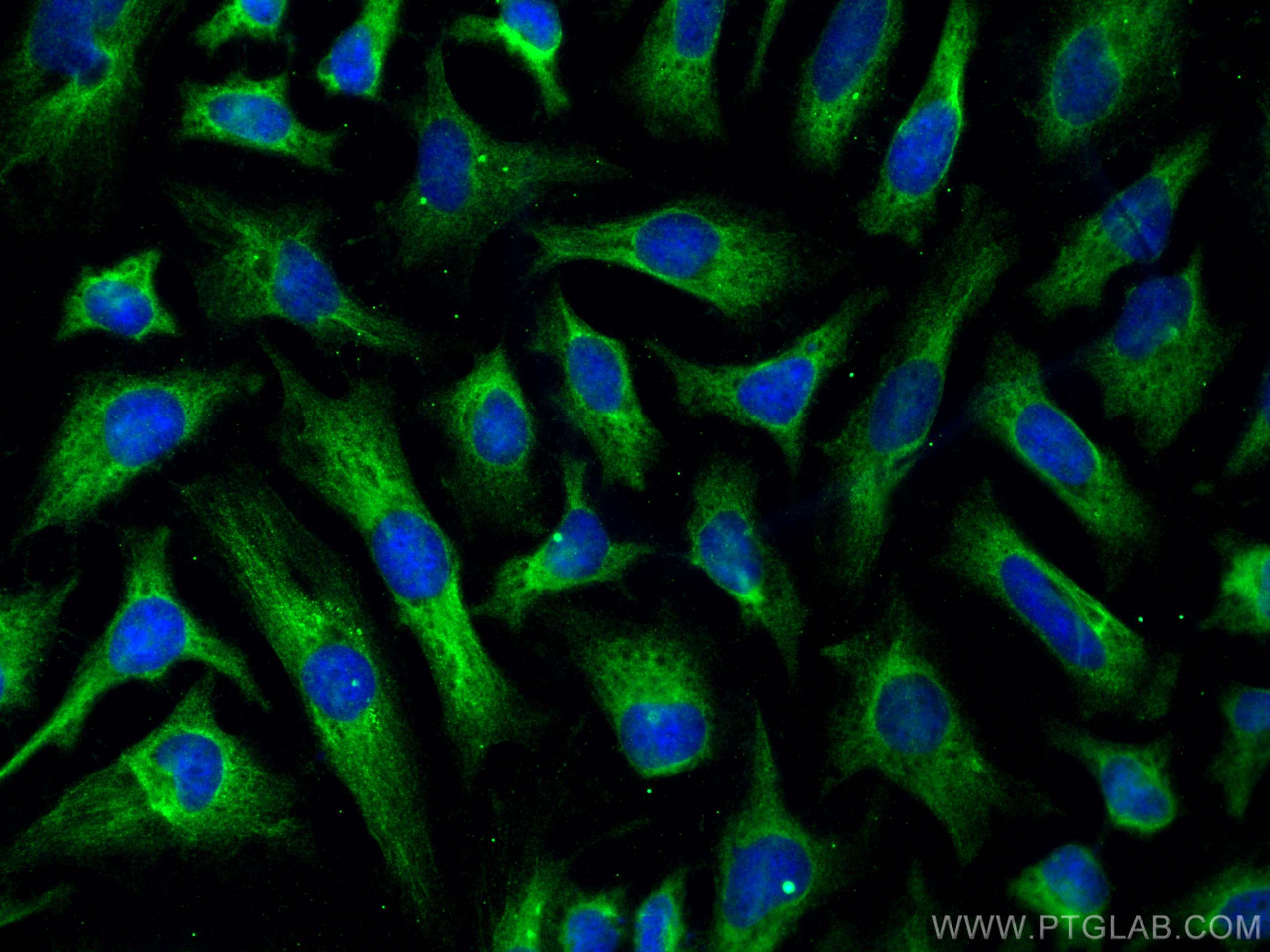Anticorps Polyclonal de lapin anti-NDUFS7
NDUFS7 Polyclonal Antibody for WB, IHC, IF/ICC, ELISA
Hôte / Isotype
Lapin / IgG
Réactivité testée
Humain, rat, souris
Applications
WB, IHC, IF/ICC, IP, ELISA
Conjugaison
Non conjugué
N° de cat : 15728-1-AP
Synonymes
Galerie de données de validation
Applications testées
| Résultats positifs en WB | cellules A549, cellules HeLa, tissu cérébral humain |
| Résultats positifs en IHC | tissu hépatique humain il est suggéré de démasquer l'antigène avec un tampon de TE buffer pH 9.0; (*) À défaut, 'le démasquage de l'antigène peut être 'effectué avec un tampon citrate pH 6,0. |
| Résultats positifs en IF/ICC | cellules HeLa, |
Dilution recommandée
| Application | Dilution |
|---|---|
| Western Blot (WB) | WB : 1:1000-1:5000 |
| Immunohistochimie (IHC) | IHC : 1:20-1:200 |
| Immunofluorescence (IF)/ICC | IF/ICC : 1:200-1:800 |
| It is recommended that this reagent should be titrated in each testing system to obtain optimal results. | |
| Sample-dependent, check data in validation data gallery | |
Applications publiées
| WB | See 13 publications below |
| IHC | See 2 publications below |
| IF | See 3 publications below |
| IP | See 1 publications below |
Informations sur le produit
15728-1-AP cible NDUFS7 dans les applications de WB, IHC, IF/ICC, IP, ELISA et montre une réactivité avec des échantillons Humain, rat, souris
| Réactivité | Humain, rat, souris |
| Réactivité citée | Humain, souris |
| Hôte / Isotype | Lapin / IgG |
| Clonalité | Polyclonal |
| Type | Anticorps |
| Immunogène | NDUFS7 Protéine recombinante Ag8471 |
| Nom complet | NADH dehydrogenase (ubiquinone) Fe-S protein 7, 20kDa (NADH-coenzyme Q reductase) |
| Masse moléculaire calculée | 213 aa, 24 kDa |
| Poids moléculaire observé | 20 kDa |
| Numéro d’acquisition GenBank | BC005954 |
| Symbole du gène | NDUFS7 |
| Identification du gène (NCBI) | 374291 |
| Conjugaison | Non conjugué |
| Forme | Liquide |
| Méthode de purification | Purification par affinité contre l'antigène |
| Tampon de stockage | PBS with 0.02% sodium azide and 50% glycerol |
| Conditions de stockage | Stocker à -20°C. Stable pendant un an après l'expédition. L'aliquotage n'est pas nécessaire pour le stockage à -20oC Les 20ul contiennent 0,1% de BSA. |
Informations générales
NDUFS7(NADH dehydrogenase [ubiquinone] iron-sulfur protein 7, mitochondrial) protein is one of the most conserved subunits of mitochondrial respiratory chain complex I and plays a central role in the interaction with the electron acceptor ubiquinone and in the proton-translocating mechanism(PMID:15269216).Defects in NDUFS7 are a cause of Leigh syndrome (LS) and mitochondrial complex I deficiency (MT-C1D).
Protocole
| Product Specific Protocols | |
|---|---|
| WB protocol for NDUFS7 antibody 15728-1-AP | Download protocol |
| IHC protocol for NDUFS7 antibody 15728-1-AP | Download protocol |
| IF protocol for NDUFS7 antibody 15728-1-AP | Download protocol |
| Standard Protocols | |
|---|---|
| Click here to view our Standard Protocols |
Publications
| Species | Application | Title |
|---|---|---|
Cell Res NDUFAB1 confers cardio-protection by enhancing mitochondrial bioenergetics through coordination of respiratory complex and supercomplex assembly. | ||
Mol Cell Maintaining Iron Homeostasis Is the Key Role of Lysosomal Acidity for Cell Proliferation. | ||
Cell Chem Biol Metabolic targeting of cancer by a ubiquinone uncompetitive inhibitor of mitochondrial complex I. | ||
Arch Toxicol SIRT3-dependent mitochondrial redox homeostasis mitigates CHK1 inhibition combined with gemcitabine treatment induced cardiotoxicity in hiPSC-CMs and mice | ||
Mol Cell Biol TRMT1-catalyzed tRNA modifications are required for redox homeostasis to ensure proper cellular proliferation and oxidative stress survival. | ||
Avis
The reviews below have been submitted by verified Proteintech customers who received an incentive for providing their feedback.
FH Matthieu (Verified Customer) (09-24-2025) | Band visible at expected size
|
FH Manon (Verified Customer) (09-23-2025) | Good specific band
|
FH Emilie (Verified Customer) (07-23-2025) | Used for Western blot on human fibroblasts and gives a clear, well-defined band. I recommend this product.
|
